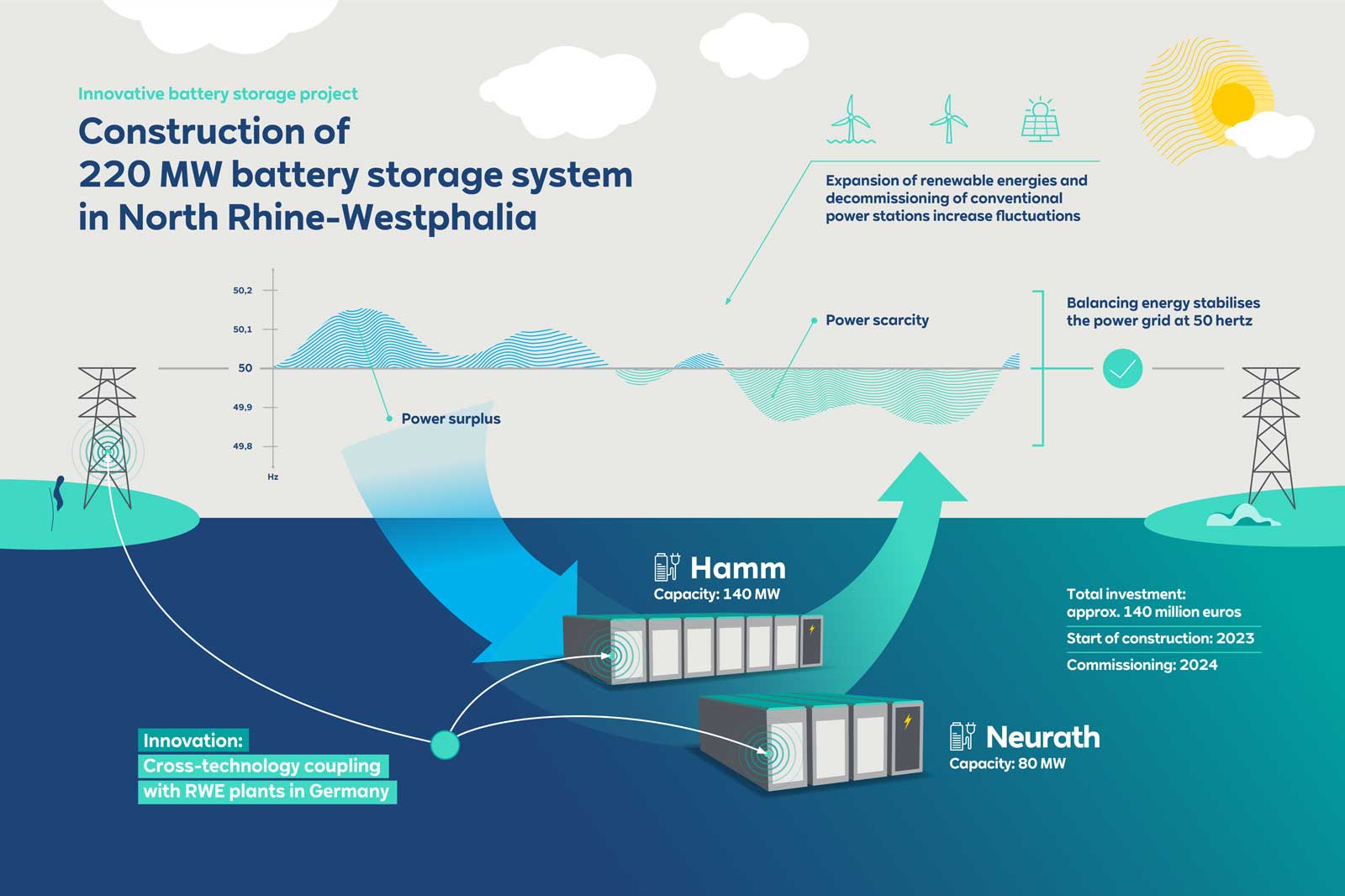An electricity grid is stable and secure when electricity generation exactly meets electricity demand. Since electricity is increasingly being generated in wind and solar power plants and production can thus fluctuate due to variations in the weather, feed-in into the power grid is also fluctuating more and more. When electricity feed-in or demand deviate significantly from forecasts, instabilities on the electricity grid may occur. Another factor is the growing number of thermal power plants being shut down. Up to now, their “rotating masses” (rotors and steam turbines weighing several tonnes) have safeguarded against sudden changes in grid frequency, both upwards and downwards. With the ongoing phase-out of coal, gas and other conventional fuels, the number of plants that fulfil this stabilisation function is decreasing. Battery storage systems can fill this this gap. They can store energy within milliseconds and make it available again just as quickly when it is needed. In this way they can balance the grid load and help in maintaining a stable grid frequency.
Battery storage systems are a key element in the energy transition, since they can store excess renewable energy and make it available when it is needed most.
As a battery storage pioneer, RWE develops, builds and operates innovative and competitive large battery storage systems as well as onshore and solar-hybrid projects in Europe, Australia and the US. The battery storage capacity already installed is currently around 1.2 GW (~2.7 GWh).
When it comes to linking battery storage technology with green electricity production, RWE can draw on many years of experience in the energy storage and renewables sector. The company provides project planning, modelling, system integration, and commissioning of the projects in house and under one roof.


